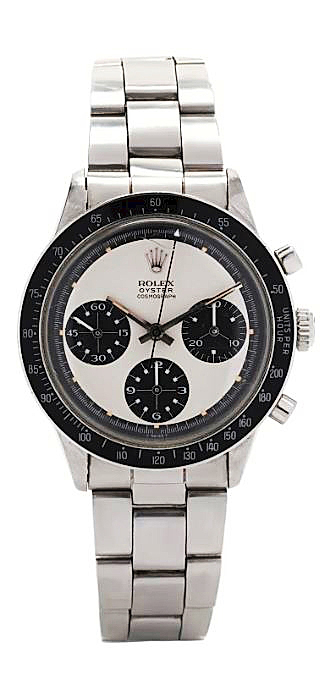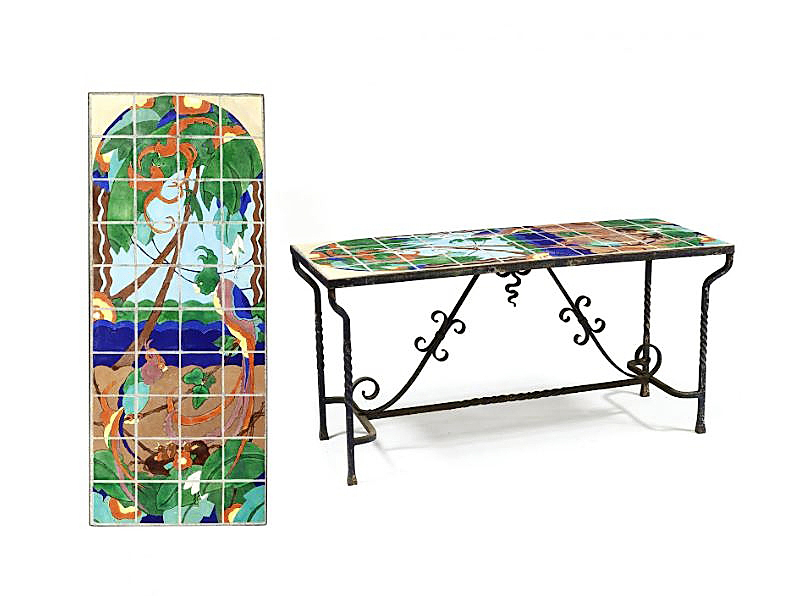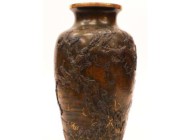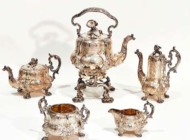
Staying in the United States is this vintage stainless steel Rolex Oyster Cosmograph watch, which soared above its $10,000 presale estimate to settle at $420,000, the sale’s top lot.
Review By W.A. Demers; Photos Courtesy Leland Little
HILLSBOROUGH, N.C. — A vintage stainless steel Rolex Oyster Cosmograph watch soared above its $10,000 estimate at Leland Little’s Signature Summer auction on June 10 to settle at $420,000. Circa 1970, the reference no. 6264, watch featured a stainless steel case with black enamel tachymeter bezel, the silver dial with round hour markers, stick hands and center second hand sweep, with three sub-dials and outer five minute register, completed with an Oyster bracelet band and signed deployment clasp. From a private Virginia collection, the watch was a gift to the consignor from his parents upon his graduation in 1974, purchased on July 11, 1974, from Bucherer Co. Ltd., Lucerne, Switzerland. It was accompanied with the Bucherer blue satin retailer’s box and papers. It is staying in the United States, according to the firm’s founder and president Leland Little.
The enduring appeal of Art Deco jewelry was borne out by a matching bracelet and ring. An Art Deco platinum, Burmese ruby and diamond bracelet sold for $96,000, while its matching ring brought $66,000; both came from a private Virginia collection. The bracelet featured gem-set articulated geometric motif links, with a center element centering on an oval cut Burmese ruby weighing approximately 3 carats within a frame set with baguette cut, round brilliant cut and single cut diamonds. Its accompanying AGL document stated that the ruby showed no evidence of treatment with Burma (Myanmar) origin and displaying a strongly purplish red hue, with medium to medium dark tone and moderately strong to strong saturation.

From the same private Virginia collection as the platinum, Burmese ruby and diamond bracelet, the matching ring brought $66,000.
The size 8.5 ring was set with a modified pear brilliant cut diamond weighing 3.12 carats (H color, VS2 clarity), and with a pear-cut Burmese ruby weighing approximately 2.35 total carats, further set with single and old European cut diamond melee weighing approximately .55 total carat (G-H color, VS-SI clarity) to the milgrain mount with engraved detailing.
The exuberance of Art Deco was offset by the simplicity of a loose Old European brilliant cut diamond weighing 3.21 carats (I color; VS2 clarity) that was bid to $30,000.
Fine art was notable in the sale. “Still Life with Blue Bottle,” 1956, by North Carolina artist Claude Howell (1915-1997) realized $31,680, the oil on canvas signed and dated at lower left, inscribed to verso and numbered 2255, presented in the original frame. Born in Wilmington, N.C., Howell traveled to artistic circles in the Northeast, New York and Paris. These travels informed his art and he painted what he knew and loved — life along the Cape Fear. From a private Wilmington art collection, this 36-by-24-inch painting was purchased from St John’s Museum of Art (present-day Cameron Art Museum) in Wilmington, circa 1974.

American artist Sarah Blakeslee was represented by “Old Mill and Canal Lock, Manayunk,” an oil on canvas, circa 1954, signed at lower right and presented in a later gilt frame. Doubling its high presale estimate to reach $22,200, the painting well exemplified her mature style.
American Sarah Blakeslee (1912-2005) was represented by “Old Mill and Canal Lock, Manayunk,” an oil on canvas, circa 1954, signed at lower right and presented in a later gilt frame. Doubling its high estimate to reach $22,200 the painting well exemplified her mature style, shimmering with life and light as adult and child figures plus a dog appear to enjoy a day along the water in eastern North Carolina.
Born in Evanston, Ill., according to catalog notes, Blakeslee began her art studies at the age of 13 at the Chicago Art Institute. Her family moved to Washington DC, where she enrolled at the Corcoran School of Art and Miss Catherine Critcher’s School of Art. She took classes at the Pennsylvania Academy of Fine Arts during the first-half of the 1930s and was awarded the academy’s prestigious Cresson Scholarship twice.
An acrylic on canvas by Ivey Hayes (American, 1948-2012), “Tobacco for Market,” 2000, also doubled its high estimate, settling at $18,000. Colorfully depicting workers baling tobacco leaves for sale, the painting was signed and dated at lower right, framed, measuring 29 by 40¾ inches. Catalog notes state that Hayes was born in Pender County, N.C., graduating from what is now known as North Carolina Central University in 1970. He continued his studies at the University of North Carolina at Chapel Hill and earned his MFA in 1975 from the University of North Carolina at Greensboro. This painting was from a private collection in Holden Beach, N.C.

A vintage tile top and iron garden room table, circa 1930s, attributed Taylor Tilery Co., left the gallery at $19,200, more than five times its high estimate. With colorful stylized tropical avian and fauna images, 40 individual tiles were held within a blue painted cast iron table frame with scrolled supports, twist legs and center stretcher.
Finally, a vintage tile top and iron garden room table attributed Taylor Tilery Co., left the gallery at $19,200, more than five times its high estimate. Circa 1930s, the colorful stylized tropical avian and fauna scene comprised 40 individual tiles held within a blue painted cast iron table frame with scrolled supports, twist legs and center stretcher, overall measuring 31 by 64 by 26 inches. Stylistically, the tile panel is reminiscent of the famous bird panels designed by William (“Bill”) Handley of Taylor Tilery Company.
Operating from 1934 to 1938, Taylor was located in Santa Monica, Calif., according to catalog notes. The firm produced decorative tiles, garden ornaments and chimney pots, mostly using the native red-clay of the region. In the 1930s, Taylor supplied its distinctive California tiles to nearby furniture manufacturers to be put into table tops, including the Los Angeles Period Furniture Company, Western Table Company and the Joseph McPherson Furniture Company.
Prices given include the buyer’s premium as stated by the auction house. For further information, www.lelandlittle.com or 919-644-1243.








